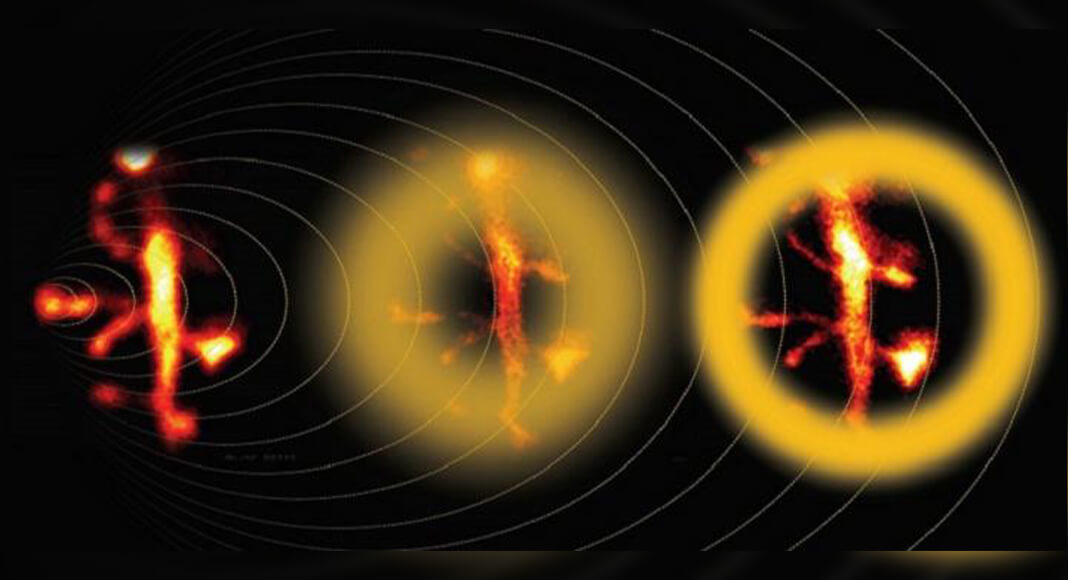
Mega Doctor News
Newswise — Light–and all waves–can bend around the corners of obstacles found along its path. Because of this phenomenon, called diffraction, it is impossible to focus light onto a spot that is smaller than half its wavelength. In other words, the highest resolution one can theoretically achieve using an optical microscope is approximately 250 nm, a barrier called the diffraction limit. Unfortunately, this resolution is not enough for observing fine cellular structures, such as those found in neurons.
Over more than a century, microscopists were hamstrung by this classic barrier until the invention of super-resolution fluorescence microscopy. One particularly powerful approach was developed in the late 1990s and coined stimulated-emission depletion (STED) microscopy. This technique requires the target sample to contain fluorophores, which are compounds that absorb light at one wavelength and then re-emit it at a longer one. In the simplest version of STED microscopy, fluorophores are excited in a circular spot by irradiation with a diffraction-limited focused laser. Then, a donut-shaped portion around the spot is irradiated with less-energetic light–the depletion beam–which switches off the fluorescence by the process of stimulated emission. Thus, the net effect is that only the fluorophores in the center of the donut re-emit photons, and because that area can be made arbitrarily small, this allows for super-resolution microscopy.
Although STED microscopy was a true breakthrough for observing the morphology of live neurons at higher resolution, there is still room for improvement. In a recent study published in Neurophotonics, a team of scientists led by Dr. U. Valentin Nägerl from Université de Bordeaux developed a simple yet effective calibration method that allows for more precise STED imaging at higher tissue depths. Their approach is based on analyzing and correcting for one of the main sources of systematic error in STED microscopy for biological samples: spherical aberration of the depletion beam.
When imaging a tissue sample at depths higher than 40 μm, the depletion beam suffers various types of defocusing and degradation (aberration) and loses its carefully crafted shape, which is essential to the STED method. Spherical aberration is the biggest offender and was the one the researchers targeted. Their strategy was to first prepare a brain tissue phantom sample, a gel-based proxy with a refractive index similar to that of the actual brain. This phantom sample contained homogenously dispersed fluorophores and gold nanoparticles, which allowed the team to clearly visualize and quantify how the shape of the depletion beam got distorted as it penetrated deeper. Then, they calculated the necessary pre-adjustments that should be made to the depletion beam according to tissue depth so that its final shape more closely matches the ideal one. The adjustments were made using adaptive optics, which is a technology originally developed by astronomers to improve telescopic images that suffer from aberrations caused by the earth’s atmosphere.
Once the shape of the depletion beam had been calibrated according to the phantom tests, the scientists proceeded to image live neural tissue. They compared the results of regular STED microscopy, corrected STED microscopy, and two-photon microscopy–a technique that is specifically adjusted for deep tissue imaging. The results were quite convincing: corrected STED images captured the fine details of deeper neural dendrites much better than standard STED images. “Using our calibration strategy, we could measure neuronal structures as small as 80 nm at a depth of 90 μm inside biological tissue and obtain a 60 percent signal increase after correction for spherical aberration,” says Nägerl.
Ji Yi, professor of biomedical engineering at Johns Hopkins University remarks, “Super-resolution microscopy has been primarily applied for thin specimens, such as single layer cells, where light scattering is negligible. The team led by Valentin Nägerl implemented adaptive optics in a two-photon stimulated emission depletion microscopy (2P-STED), and achieved 80nm resolution of imaging neuron dendritic spines through 90 micron brain tissue. This is noteworthy because super-resolution is hard to maintain in thicker tissue–particularly given the highly scattering quality of brain tissue.” Yi explains that the advance will facilitate study of neural activities and interactions. Considering this novel calibration process is robust, straightforward to implement, and relatively inexpensive, it could be easily incorporated into standard laboratory practices to obtain better results with STED microscopes, so long as the prepared phantom sample matches the optical properties of the biological specimen. In this regard, Nägerl states: “Our approach is not limited to brain samples; it could be adapted to other tissues with known and relatively homogeneous refractive indices, as well as other types of preparations, even potentially in the intact, live mouse brain.”










